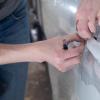4x4 Utes Have Made An Impressive Comeback
After a gap of many years when the 4x4 Utes sales volumes were rather tepid and nothing much was happening to elicit a stronger consumer response, things have changed and the last couple of years in particular has seen a lot of action not only in the safety features being added to the 4x4 Utes but also on the transmission front. This has helped in boosting sales figures.
Indeed, some precious time was lost in between, when all you could see in a Utes was some cosmetic panel changes or some tweak in engine power. Major up gradations were conspicuous by their absence and that did not help the industry at all.
However, as if to make up for lost time, there has been a flurry of activities of late. Developments in the form of electronic stability control, electronic traction control and ABS have made them much safer. The handling has also improved vastly thanks to refinement in its torque.
These small trucks are now measuring up to the expectations of their loyalists and all major brands like Toyota, Holden, Mitsubishi, Mazda and Nissan have all brought about changes in their transmission capabilities as well.
You can now have up to seven speeds and the positive aspect that we can derive out of all this is that increased competition and their keenness to improve existing models is very good for the consumer as he will now get better value for his money spent.
But there remains a flip side to the story as well and some experts are still not very happy or sanguine about these developments positively impacting the future of 4x4 Utes and leading to better driving experience.
They feel that stuff like the absence of independent rear suspension and the heavy reliance on disc rear brakes are still limiting factors for most brands. They are also not happy with the fact that the leaf springs are still being used, which is a pretty archaic idea. They cause more friction than they should. That is obviously not good for the vehicle and results from the rubbing of these springs as they get compressed and then extend themselves.
The lack of the much preferred all wheel drive is yet another limitation with 4x4 Utes. This deficiency becomes more apparent when you have greater power and matching torque but cannot be allocated or chanellised efficiently to the four wheels.
One of the main reasons for 4x4 Utes remaining behind the advancement curve is the secure recognition by major brands that the older design is much cheaper for them to roll out. Moreover, the pressure from consumers in wanting a more sophisticated suspension has been found wanting and they have been happy each time they have got something extra by way of torque.
4x4 Utes were first invented in Australia in 1929, when a farmer needed to use it to carry goods and livestock to market, while still be able to take his wife to church on Sundays. 4x4 Utes are still a popular sight in country NSW and amongst farmers and tradesmen.
More to Read:
Previous Posts:



